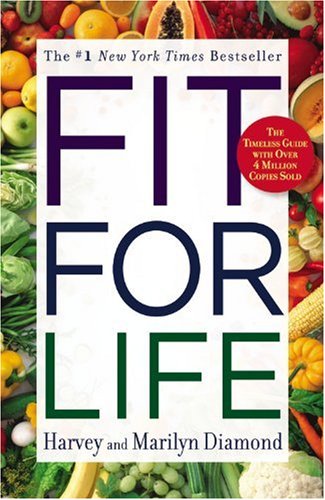When I first discovered LT, reportedly based on the principles of the Rambam, I was expounding on it fűnek fának (Hungarian phrase which roughly translates as: "She told it to every tree and every blade of grass").
As I was enthusing the concepts to my sister-in-law, she nodded and countered, "Sure, sounds like Fit for Life."
"Right!" Ma said. "A friend of mine lost a ton of weight years ago on that."

To pad my knowledge database, I requested the one lonely copy from my library. Since I am incredibly gullible, I was relating the Gospel of FFF until I did a wee bit of googling . . .
The basic premise of LT and FFF is food combining, which is also present in Aryudevic and Chinese medicine: Certain foods should not be consumed with other certain foods. FFF describes the reasons for it having to do with digestive enzymes canceling each other out when attacking proteins and starches. According to contemporary medicine, that is not so. Officially, FFF has been discredited.
Yet the ancients were unfamiliar with the pH levels churning around in our guts, but they still advocated food combining. I have noticed a difference, too, in how I physically feel when I eat fruits alone, and when I don't regularly combine proteins and starches.
I few weeks ago I began to heartlessly combine once again, and even though I was being quite aware of portion size I noticed a difference as opposed to when I do keep my chicken and potatoes separate.
I few weeks ago I began to heartlessly combine once again, and even though I was being quite aware of portion size I noticed a difference as opposed to when I do keep my chicken and potatoes separate.
But on the other hand, various systems classify certain items in different categories; LT considers beets and carrots, for instance, as medium-starchy vegetables, while FFF views them as starches. Then there's what Aryudeva thinks.
There is no clear consensus!
But there are some easily quantifiable conclusions: Since food combining bans protein and starch at the same meal but grant carte blanche to vegetables with either, more low-cal green goodness is consumed—always a good thing.
It's not that any food (except for junk) is forbidden, it's just that they shouldn't be eaten together. Because one is aware, one ends up consuming less calories in one meal. "I can't eat this now, maybe later or tomorrow." Self-control and delayed gratification is vital to weight maintenance, and they both result from food combining consciousness.
LT has really helped me with weight maintenance; I lost yontif poundage without going hungry, a sensation which I had always believed to be necessary in order to shed some digits. It's not that I can never have cereal with milk or a slice of pizza ever again, just that it's only for when I have already reached my ideal weight and I keep it to one portion (unlike FFF, which bans the combo completely).
There are enough proponents as well as detractors of food combining to leave it a murky topic. (Marilu Henner confused me even more by saying that protein can be eaten with starch as long as there are legumes or vegetables; I gave it a whirl as well.)
But you know what? Food combining works for me. And for Ma. I'm gonna go with Marilu's "laboratory" method (check out Part 1 and Part 2 of her segment); I'm "collecting data," and that concept is a keeper.
But you know what? Food combining works for me. And for Ma. I'm gonna go with Marilu's "laboratory" method (check out Part 1 and Part 2 of her segment); I'm "collecting data," and that concept is a keeper.
2 comments:
What about foods that naturally contain both starch and protein? Like beans, or oatmeal.
Those two tend to fall in the category of "starch." "Protiens" are usually animal-sourced, including dairy products.
And the annoying thing is, now cereal and milk is a once-in-a-while treat. I've noticed the difference when I eat it regularly. Blah.
Post a Comment